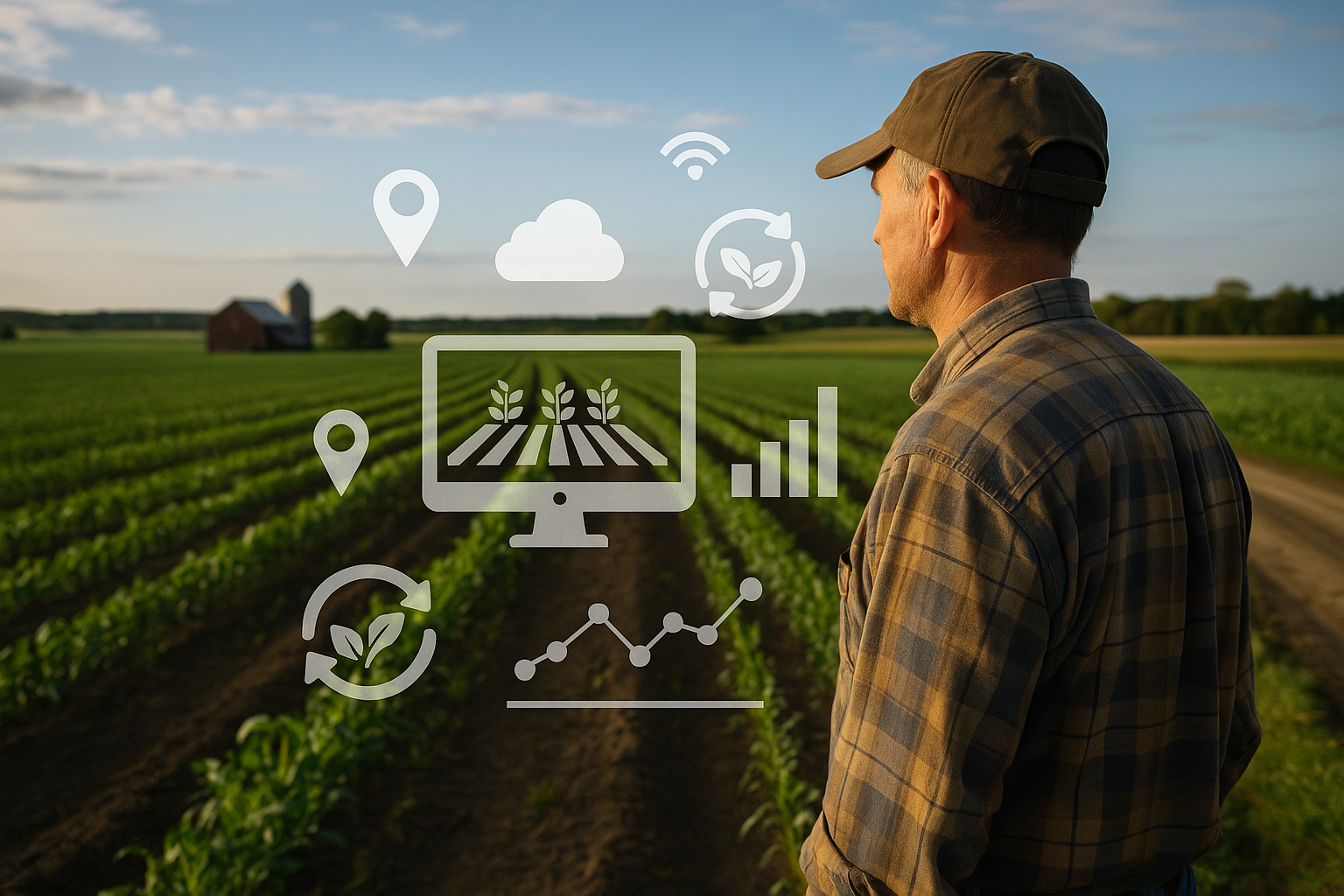Global farming faces radical shift as AI and regenerative practices converge
Using artificial intelligence, precision sensors, remote sensing, and cloud-based analytics, farms can now monitor soil health, crop growth, and water use with unprecedented precision. The authors describe digital agriculture as a data-driven layer that transforms traditional farms into intelligent production systems capable of responding instantly to environmental and market changes.

A new study from the University of Sydney argues that the mid-21st century demands a systemic overhaul of how food is grown, traded, and valued. The paper titled "Agriculture over the Horizon: A Synthesis for the Mid-21st Century" and published in Sustainability proposes a new agricultural paradigm that merges digital intelligence, ecological restoration, and market reformation into a single unified model for sustainable food production.
The research presents an integrated roadmap where digital agriculture, regenerative agriculture, and decommoditised agriculture converge to create a system capable of feeding a growing population while repairing ecosystems and improving farmer livelihoods. This synthesis offers not just an agricultural vision, but a strategic agenda for climate action, biodiversity conservation, and food system reform.
Digital agriculture: Data and AI as the new soil of productivity
The first pillar of the study's framework, digital agriculture, redefines how agricultural decisions are made. Using artificial intelligence, precision sensors, remote sensing, and cloud-based analytics, farms can now monitor soil health, crop growth, and water use with unprecedented precision. The authors describe digital agriculture as a data-driven layer that transforms traditional farms into intelligent production systems capable of responding instantly to environmental and market changes.
The study notes that these technologies are already delivering measurable gains in productivity and efficiency. AI algorithms now help optimize irrigation schedules, identify pest infestations early, and forecast yield outcomes with high accuracy. The authors argue that this digital transition allows farmers to produce more with less, reducing chemical inputs, conserving water, and minimizing greenhouse gas emissions.
Yet, the paper also warns of the digital divide, the gap between technologically advanced agribusinesses and smallholder farmers. Without fair access to tools, training, and connectivity, emerging technologies risk deepening inequality rather than bridging it. The authors advocate for open data ecosystems, cooperative digital infrastructure, and policies that democratize access to AI and IoT systems. Only then can digital agriculture fulfill its potential as a public good rather than a private luxury.
The digital transformation, according to the study, is not merely about automation but about intelligence integration, linking data streams across climate, soil, and market domains to create adaptive, self-learning food systems that anticipate challenges before they escalate.
Regenerative agriculture: Healing the planet beneath the plough
The second cornerstone of this vision is regenerative agriculture, a system that seeks to heal rather than exploit the land. As climate change, soil degradation, and biodiversity loss intensify, regenerative practices, such as crop rotation, cover cropping, and integrated livestock management, are being positioned as vital tools for ecosystem recovery.
The study highlights that regenerative agriculture is not a return to pre-industrial methods but an innovation-led renewal of ecological processes. It uses modern science and technology to rebuild natural capital, increase soil carbon, and strengthen ecosystem resilience. The authors argue that if widely adopted, regenerative approaches could transform agriculture from a major emitter of greenhouse gases into a net carbon sink, aligning directly with global climate targets.
Through case studies from Australia, China, and the United States, the paper illustrates how regenerative farms deliver both ecological and economic dividends. In these examples, improved soil structure and microbial diversity lead to higher yields, better drought resistance, and reduced dependence on synthetic fertilizers. The shift also supports biodiversity, as farms become part of larger landscape-level ecological networks.
However, the authors caution that regenerative agriculture alone cannot meet future food demand without the integration of digital monitoring systems. Precision technologies, they argue, are essential for verifying soil carbon gains, monitoring water retention, and ensuring that regenerative claims are backed by empirical data. The future of agriculture, in this vision, lies in the fusion of ecological restoration and digital verification, ensuring transparency, accountability, and measurable impact.
Decommoditised agriculture: Reshaping markets for farmer and consumer equity
The third and most socially transformative pillar of the study is decommoditised agriculture, which challenges the industrialized food system's dependence on bulk production and volatile global markets. Instead, the model promotes regionalized supply chains, direct producer–consumer relationships, and value-added local processing that ensure fairer income distribution and stronger community resilience.
The authors argue that decommoditisation represents an economic correction to decades of market concentration and price suppression that have marginalized small farmers. By prioritizing quality, provenance, and sustainability over quantity alone, this approach reconnects consumers with the ecological and social realities of their food systems.
The study points to the emergence of community-supported agriculture networks, farmer cooperatives, and digital marketplaces that bypass intermediaries. These innovations demonstrate how producers can reclaim agency, stabilize income, and reinvest in sustainability when freed from the volatility of commodity markets.
Crucially, decommoditised agriculture complements digital and regenerative systems. Digital platforms enable direct market access and traceability, while regenerative practices enhance product authenticity and consumer trust. Together, these elements form a circular economy of trust and transparency, a system in which sustainability becomes not an external cost but an intrinsic value.
The authors acknowledge, however, that such transformation demands systemic policy shifts. Agricultural subsidies, trade policies, and food labelling standards must evolve to reward ecological outcomes rather than production volume. Education, digital literacy, and local processing infrastructure are equally vital to scale this model beyond pilot projects.
- FIRST PUBLISHED IN:
- Devdiscourse





